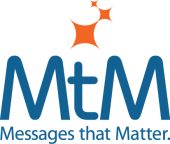Rationale Document Justifies Proposed Message Strategy
You’ve done your 3C’s research and now you need to share it. Your rationale document provides the evidence that supports your proposed message strategy. It helps educate and inform those who are providing input and feedback during the positioning process. It is a summary of the important research they need to know to objectively judge the potential effectiveness of a proposed message strategy or to suggest something better.
Your rationale document also explains the justification for your proposed positioning statement and support points. By providing a justification, it forces you to explain the thinking behind your message strategy. Your justification may help convince others involved in the positioning process – who don’t know nearly as much as you know due to your deep involvement in the process – that the proposed message strategy is appropriate based on evidence and circumstances.
Once your message strategy has been approved, the rationale document is a reference guide for writers and communicators who may not be product or domain experts. Your rational document saves time, eliminating the need to provide writers with the background information every time you launch a new marketing campaign.
Your rationale document includes the following background information necessary to explain your recommended message strategy:
- What does your product do?
- Product category (define the category occupied by your product)
- What is your target market?
- Audience analysis (describe the target buyer including job titles and functions (demographics) and target buyer concerns, attitudes and behaviors (psychographics)
- List the target buyer’s most pressing problems in order of importance
- Describe your ideal customer profile (what characteristics tell your sales team they are talking to a good prospect)
- Sales channel overview (describe how your products are sold and any impact it will have on positioning and marketing communications)
- Provide an overview of the competitive landscape
- Market analysis (profile target market(s) by size, revenue, market segment, operational type or other relevant categories)
- Situation analysis (explain why you are changing your positioning and messaging)
- What other factors impact your message strategy?
- What is your positioning statement?
- Explain your positioning statement and how you converged on it:
- Explain how your positioning statement differentiates you from your competitors
- What are your support points?
- Explain your support points
- Apply your message strategy in 100 words or less, a short press release and content on your website
